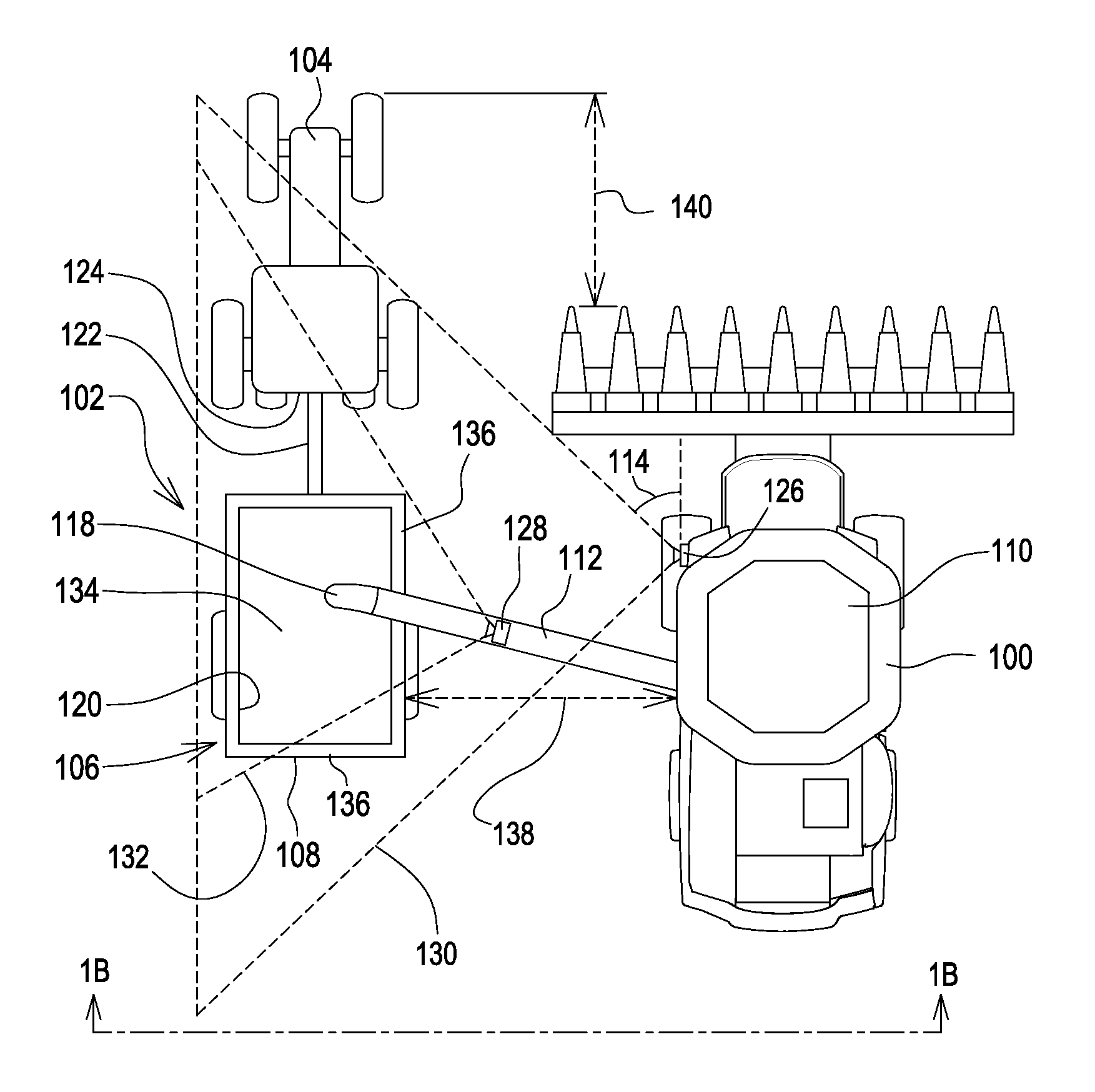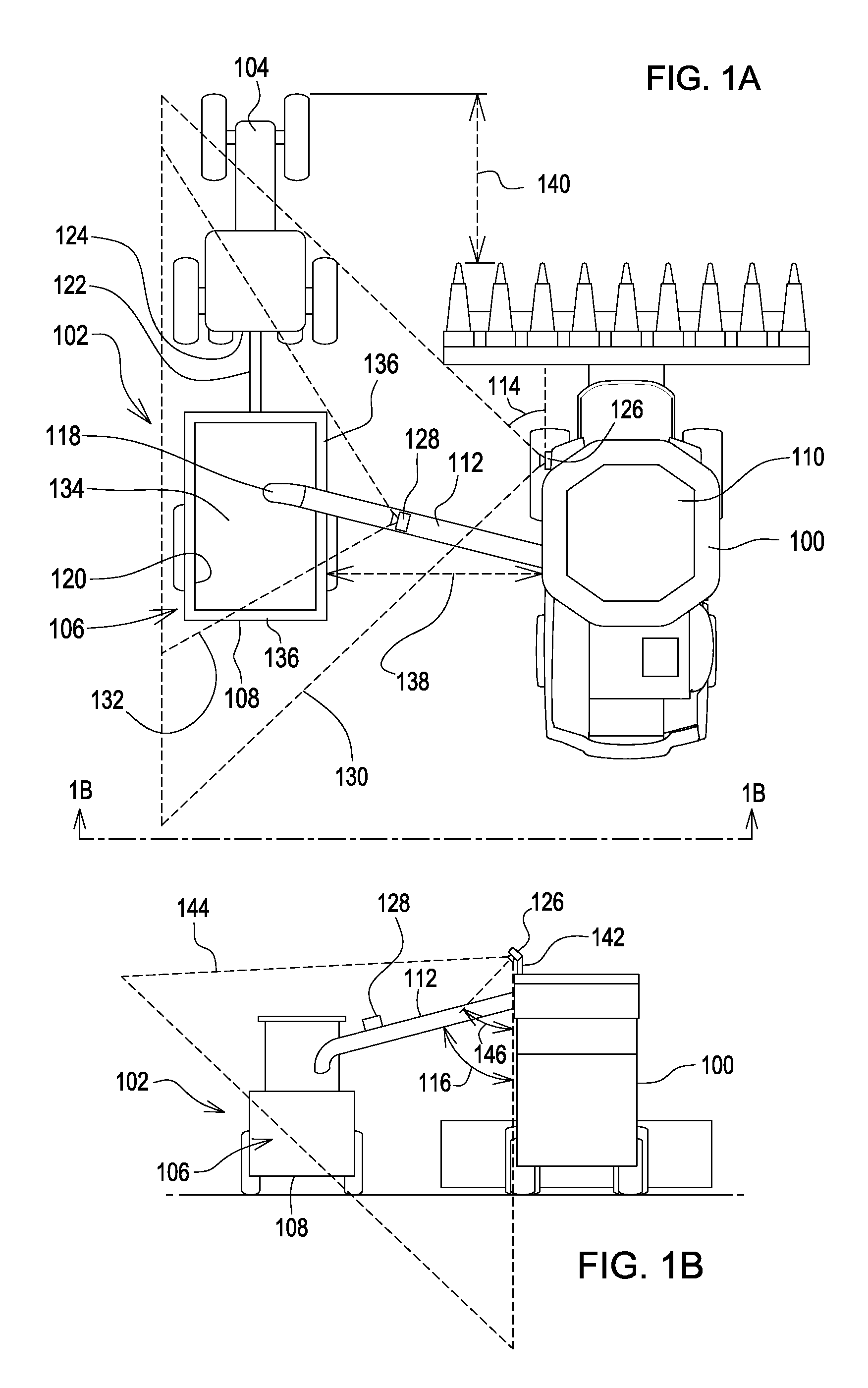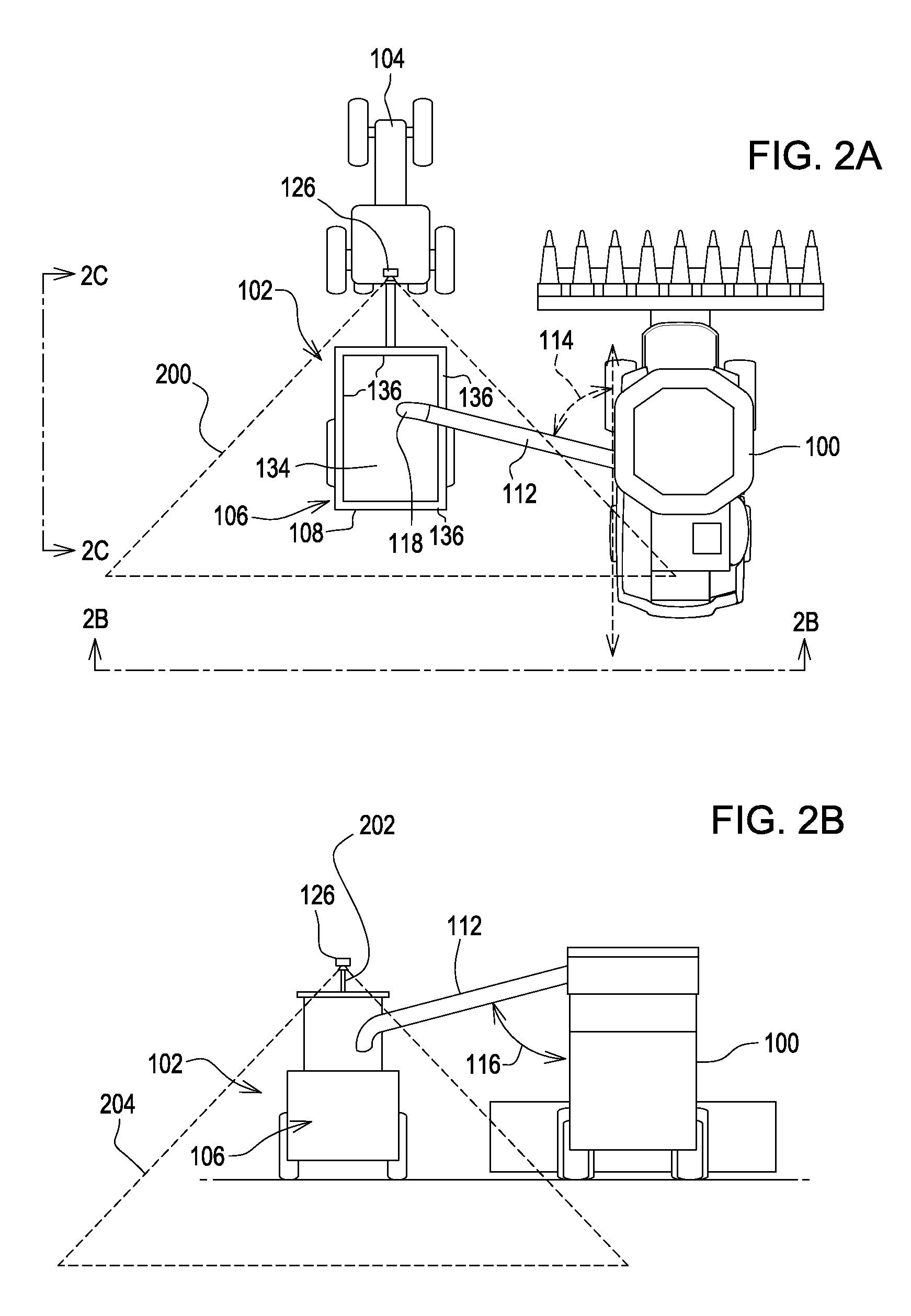Artificial intelligence for detecting and filling void areas of agricultural commodity containers
a technology of artificial intelligence and agricultural commodity containers, applied in the field of agricultural material transfer, can solve the problem that the operator may not have a clear line of sight, and achieve the effect of facilitating the transfer of agricultural materials
- Summary
- Abstract
- Description
- Claims
- Application Information
AI Technical Summary
Problems solved by technology
Method used
Image
Examples
example void
[0129 filling modes 1400 may include further steps to control the order in which voids are filled. In one example, the void filling mode 1400 may command the spout 112 to sweep from back-to-front or front-to-back and selectively fill voids as they are identified. In another example, the void filling mode 1400 may begin by filling the void with the largest void volume and sequentially filling smaller voids until all voids are filled. Certain examples utilize a control strategy that minimizes actuation energy of the spout 112 by minimizing movement of the spout 112. Other examples may restrict the void filling mode to portions of a zone depending on the material distribution within the storage portion 106. In an example in which the void filling mode 1400 is entered within a zone prior to all of the zones being considered full, the void filling mode 1400 may ignore portions of a zone that are adjacent cells or columns having lower fill levels. Otherwise, voids may be falsely identifie...
PUM
 Login to View More
Login to View More Abstract
Description
Claims
Application Information
 Login to View More
Login to View More - R&D
- Intellectual Property
- Life Sciences
- Materials
- Tech Scout
- Unparalleled Data Quality
- Higher Quality Content
- 60% Fewer Hallucinations
Browse by: Latest US Patents, China's latest patents, Technical Efficacy Thesaurus, Application Domain, Technology Topic, Popular Technical Reports.
© 2025 PatSnap. All rights reserved.Legal|Privacy policy|Modern Slavery Act Transparency Statement|Sitemap|About US| Contact US: help@patsnap.com



